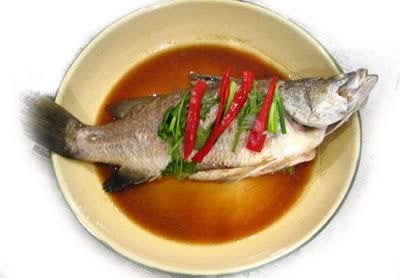Ingredients
- Ingredients Beef:
- 1 4- to 5-pound trimmed whole beef tenderloin tail end tucked under, tied every 3 inches
- 2 teaspoons coarse kosher salt
- Sauce:
- 4 tablespoons (1/2 stick) chilled unsalted butter, divided
- 1/4 cup finely chopped shallots
- 3 tablespoons Cognac or brandy
- 1 fresh rosemary sprig
- 1 teaspoon coarsely cracked black pepper
- 1 cup ruby or tawny Port
- Simple Homemade Beef Stock
- Roasting:
- 2 tablespoons extra-virgin olive oil
- 2 tablespoons black peppercorns coarsely cracked in mortar with pestle or in resealable plastic
Preparation
For beef:
Sprinkle entire surface of beef tenderloin with coarse kosher salt. Place beef on rack set over large rimmed baking sheet. Refrigerate uncovered at least 24 hours and up to 36 hours.
For sauce:
Melt 2 tablespoons butter in large saucepan over medium-low heat. Add shallots; saut? until soft, 3 minutes. Add Cognac, rosemary, and 1 teaspoon cracked pepper and cook until liquid evaporates, 1 minute. Add Port; bring to simmer. Add all of beef stock. Boil until reduced to 1 1/2 cups, about 20 minutes. Strain into medium saucepan, pressing on solids to extract as much liquid as possible. Discard solids in strainer. DO AHEAD: Can be made 24 to 36 hours ahead. Cool slightly, then cover and chill.
For roasting:
Let beef stand at room temperature 1 hour before roasting. Position rack in center of oven and preheat to 425?F. Rub beef all over with oil; sprinkle with 2 tablespoons cracked peppercorns, pressing to adhere. Return beef to rack on baking sheet and roast until instant-read thermometer inserted into thickest part of meat registers 125?F for medium-rare (135?F to 140?F in thinnest part), about 30 minutes. Remove roast from oven and let rest 15 minutes.
Bring sauce to boil; whisk in remaining 2 tablespoons butter. Season sauce to taste with salt and pepper.
Cut off string from roast. Cut roast crosswise into 1/2-inch-thick slices; arrange on platter. Serve with sauce.
TEST-KITCHEN TIP: Salting in advance, also called dry brining, is often done to improve the texture of sinewy cuts of meat. But it also works magic on tender cuts, amping up flavor and juiciness. It sounds counterintuitive; for years the accepted wisdom was that pre-salting dries out meat. But the moderate salting you'll be doing here does the opposite. Water is first drawn out of the meat and then gets reabsorbed; this saltier, more flavorful moisture helps intensify taste. What's more, the exterior of the tenderloin dries out slightly, making it quicker to brown in the oven.





